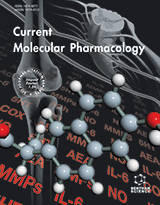Abstract
The cardiac L-type Ca2+ channel plays a key role in cardiac excitation-contraction coupling, action potential duration, and gene expression. Abnormalities in CaV1.2 function, including increased long-opening-mode gating and blunted adrenergic responsiveness, are associated with heart failure and hypertrophy. The increased activation of CaV1.2, in turn, triggers Ca2+ -responsive signaling pathways, which contribute to the pathogenesis of heart failure and hypertrophy. CaV1.2 in heart is associated with large supramolecular complexes that impact on channel trafficking, localization, turnover, and function. Much of the prevailing dogma relating to mechanisms underlying CaV1.2 trafficking and modulation is derived from studies using recombinant channels reconstituted in heterologous expression systems. However, recent results using knock-in mice indicate that several long-standing “facts” about CaV1.2 regulation derived from heterologous expression studies are not replicated in native heart, emphasizing the critical need for mechanistic studies in the context of actual cardiomyocytes. In this review, we discuss the use of the use of knockin and knockout mice as well as new tools, including doxycycline-induced expression of informative α1C mutants within cardiomyocytes to probe adrenergic regulation of CaV1.2.
Keywords: Calcium channel, heart, phosphorylation, PKA, transgenic.
Graphical Abstract
Current Molecular Pharmacology
Title:Novel approaches to examine the regulation of voltage-gated calcium channels in the heart
Volume: 8
Author(s): John P. Morrow and Steven O. Marx
Affiliation:
Keywords: Calcium channel, heart, phosphorylation, PKA, transgenic.
Abstract: The cardiac L-type Ca2+ channel plays a key role in cardiac excitation-contraction coupling, action potential duration, and gene expression. Abnormalities in CaV1.2 function, including increased long-opening-mode gating and blunted adrenergic responsiveness, are associated with heart failure and hypertrophy. The increased activation of CaV1.2, in turn, triggers Ca2+ -responsive signaling pathways, which contribute to the pathogenesis of heart failure and hypertrophy. CaV1.2 in heart is associated with large supramolecular complexes that impact on channel trafficking, localization, turnover, and function. Much of the prevailing dogma relating to mechanisms underlying CaV1.2 trafficking and modulation is derived from studies using recombinant channels reconstituted in heterologous expression systems. However, recent results using knock-in mice indicate that several long-standing “facts” about CaV1.2 regulation derived from heterologous expression studies are not replicated in native heart, emphasizing the critical need for mechanistic studies in the context of actual cardiomyocytes. In this review, we discuss the use of the use of knockin and knockout mice as well as new tools, including doxycycline-induced expression of informative α1C mutants within cardiomyocytes to probe adrenergic regulation of CaV1.2.
Export Options
About this article
Cite this article as:
Morrow P. John and Marx O. Steven, Novel approaches to examine the regulation of voltage-gated calcium channels in the heart, Current Molecular Pharmacology 2015; 8 (1) . https://dx.doi.org/10.2174/1874467208666150507094022
| DOI https://dx.doi.org/10.2174/1874467208666150507094022 |
Print ISSN 1874-4672 |
| Publisher Name Bentham Science Publisher |
Online ISSN 1874-4702 |
 52
52 2
2
- Author Guidelines
- Bentham Author Support Services (BASS)
- Graphical Abstracts
- Fabricating and Stating False Information
- Research Misconduct
- Post Publication Discussions and Corrections
- Publishing Ethics and Rectitude
- Increase Visibility of Your Article
- Archiving Policies
- Peer Review Workflow
- Order Your Article Before Print
- Promote Your Article
- Manuscript Transfer Facility
- Editorial Policies
- Allegations from Whistleblowers
- Announcements
Related Articles
-
MicroRNAs in Atrial Fibrillation
Current Medicinal Chemistry Are Markers of Cardiac Dysfunction Useful in the Assessment of Cardiovascular Risk in Dialysis Patients?
Current Pharmaceutical Design Nanomaterials and Stem Cell Differentiation Potential: An Overview of Biological Aspects and Biomedical Efficacy
Current Medicinal Chemistry Repulsive Guidance Molecules (RGMs) and Their Potential Implication in Cancer as Co-receptor of BMPs
Current Signal Transduction Therapy Regenerative Approaches to Post-Myocardial Infarction Heart Failure
Current Pharmaceutical Design Pulmonary Vasodilators in the Management of Low Cardiac Output Syndrome After Pediatric Cardiac Surgery
Current Vascular Pharmacology Frontotemporal Lobar Degeneration (FTLD): Review and Update for Clinical Neurologists
Current Alzheimer Research Endothelial Dysfunction in Heart Failure: Mechanisms and Therapeutic Approaches
Current Vascular Pharmacology Vascular and Cardiac Oxidative Stress and Inflammation as Targets for Cardioprotection
Current Pharmaceutical Design Current Use of Cardiac Biomarkers in Various Heart Conditions
Endocrine, Metabolic & Immune Disorders - Drug Targets Mitochondrial Biogenesis: A Therapeutic Target for Neurodevelopmental Disorders and Neurodegenerative Diseases
Current Pharmaceutical Design Programming Apoptosis and Autophagy with Novel Approaches for Diabetes Mellitus
Current Neurovascular Research Isosteviol Protects H9c2 Cells Against Hypoxia-reoxygenation by Activating ERK1/2
Cardiovascular & Hematological Disorders-Drug Targets Regulatory Approaches to Nonclinical Reproductive Toxicity Testing of Anti-Cancer Drugs
Anti-Cancer Agents in Medicinal Chemistry Obesity in the Cardiovascular Continuum
Current Clinical Pharmacology Clinical Management of the Cardiovascular Failure in Sepsis
Current Vascular Pharmacology A PHACES Syndrome Unmasked by Propranolol Interruption in a Tetralogy of Fallot Patient: Case Report and Extensive Review on New Indications of Beta Blockers
Current Medicinal Chemistry IL-1 Cytokines in Cardiovascular Disease: Diagnostic, Prognostic and Therapeutic Implications
Cardiovascular & Hematological Agents in Medicinal Chemistry Cardiac Biomarkers in Stroke, Alzheimer’s Disease, and Other Dementia. Are They of Use? A Brief Overview of Data from Recent Investigations
CNS & Neurological Disorders - Drug Targets Diabetic Complications: An Update on Pathobiology and Therapeutic Strategies
Current Diabetes Reviews


























